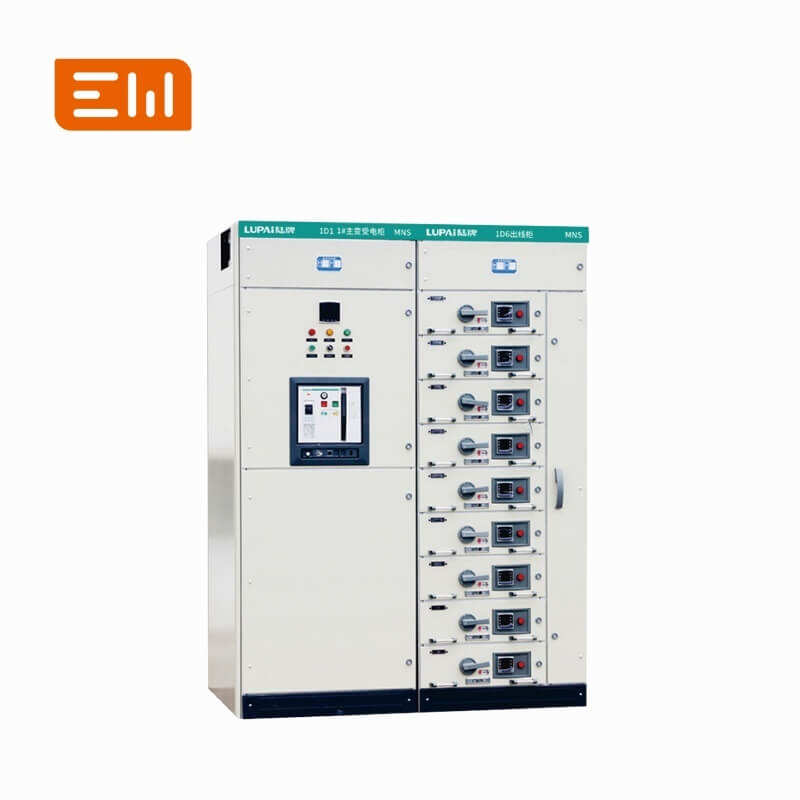Low Voltage Switch Board Engineering Best Practices
A low voltage switch board consolidates feeders, protective devices, and monitoring instruments at the front end of an electrical system. Whether powering an industrial plant or a commercial tower, the switchboard must deliver predictable performance under peak loads while giving operators actionable data.
Quick Definition: A low voltage switch board is a panelboard or switchboard rated below 1,000 V that houses busbars, circuit breakers, metering, and control components to distribute power safely to downstream circuits.
Key Project Takeaways
- IEC 61439-2 compliance is essential for low voltage switch board safety and verification.
- Segregation form, busbar sizing, and temperature management underpin long service life.
- Enwei Electric manufactures modular switch boards aligned with transformers and prefabricated substations.
- External references from IEC, IEEE, and NFPA guide specification and inspection.
Why Switch Board Upgrades Are Accelerating
Electrification of HVAC systems, electric vehicle chargers, and automation equipment increases current demand through low voltage switch boards. Aging infrastructure struggles with thermal stress and lacks breaker coordination, leading to nuisance trips and downtime. Modernizing switch boards introduces current-limiting technology, selective tripping, and digital metering.
Additionally, insurance providers and regulatory agencies now audit electrical rooms for arc-flash risk mitigation. Upgrading switch boards allows operators to install arc-resistant features, remote racking, and comprehensive labelling that satisfy safety mandates.
Core Elements of a Low Voltage Switch Board
A well-designed switch board starts with robust busbars fabricated from high-conductivity copper or aluminum. Mechanical supports maintain spacing, while heat-shrink sleeves or epoxy coatings protect against accidental contact. Incomer sections typically feature draw-out air circuit breakers with communication-enabled trip units.
Outgoing compartments can be configured as fixed or withdrawable feeders. Modular drawer systems allow maintenance without shutting down entire sections. Multifunction meters and network analyzers provide real-time voltage, current, and power quality data necessary for energy efficiency initiatives.
Standards and External Validation
Reliable switch board projects reference recognized standards:
- IEC 61439-2 — Provides the rules for power switchgear and controlgear assemblies. Source: International Electrotechnical Commission
- IEC 60529 — Defines ingress protection ratings to match environmental conditions. Source: International Electrotechnical Commission
- NFPA 70E (2021) — Offers electrical safety practices including arc-flash labelling. Source: National Fire Protection Association
These documents ensure assemblies undergo type tests, maintain proper clearances, and include safety provisions demanded by inspectors.
Design Comparison Table
| Design Parameter | Preferred Approach | Benefit Delivered |
|---|---|---|
| Form of Segregation | Form 3b or 4b compartments with metallic barriers | Allows maintenance access while keeping adjacent circuits energized. |
| Busbar Rating | 125 % of nominal load with temperature rise verification | Prevents overheating during growth phases. |
| Protection Devices | ACBs with LSIG functions; MCCBs with adjustable trip settings | Ensures selective coordination and minimizes outage scope. |
| Metering | Class 0.5S multifunction meters with waveform capture | Supports energy benchmarking and power quality diagnostics. |
| Environmental Protection | IP31 for conditioned rooms; IP54 for dusty or humid settings | Guards against contamination and condensation. |
Digital Features and Remote Insights
Switch boards have evolved into digital assets. Embedded power meters communicate via Modbus, BACnet, or IEC 61850, sending data to supervisory software. Operators gain visibility into load profiles, harmonic distortion, and breaker health. Integrating anomaly detection algorithms enables proactive maintenance and supports carbon reporting.
Cybersecurity is now part of the specification. Devices should support encrypted communication and user authentication, preventing unauthorized control of critical feeders.
Application Scenarios for Low Voltage Switch Boards
Healthcare facilities: Require redundant switch boards with automatic transfer switches to keep life-safety systems energized.
Manufacturing plants: Demand high short-circuit withstand ratings and robust enclosures to handle vibration and dust.
Commercial towers: Emphasize compact footprints, modular feeders, and detailed metering for tenant billing.
Educational campuses: Use centralized switch boards to distribute power across multiple buildings, integrating with energy dashboards.
Enwei Electric’s Switch Board Capabilities
Enwei Electric produces low voltage switch boards that align with IEC 61439, leveraging automated fabrication and strict quality control. The company’s product range, available at https://www.enweielectric.com/products/switchgear, offers modular configurations tailored to industrial, commercial, and infrastructure clients.
Switch boards can be paired with Enwei Electric’s oil-immersed transformers at https://www.enweielectric.com/products/transformers/oil-immersed-transformers or integrated within prefabricated substations showcased at https://www.enweielectric.com/products/substations for turnkey deployment.
Maintenance and Lifecycle Planning
Preventive maintenance schedules should include thermal scans, breaker mechanical operation tests, and torque checks on busbar joints. Record keeping helps track breaker life expectancy and identify components nearing end-of-life. Dust control, door seal inspection, and humidity monitoring preserve enclosure integrity.
Enwei Electric supports clients with spare parts kits, remote technical assistance, and retrofit programs that add newer protection relays or digital meters to existing switch boards.
Specification Checklist for Project Engineers
- Document load profiles, short-circuit levels, and expansion plans.
- Confirm breaker interrupting ratings and selective coordination studies.
- Specify communication protocols and cybersecurity requirements for meters and relays.
- Choose enclosure IP rating, arc-flash mitigation features, and cable entry configurations.
- Integrate grounding schemes and surge protection with upstream equipment.
Engineering FAQ on Low Voltage Switch Boards
What differentiates a switch board from a panelboard?
Switch boards handle higher currents and include draw-out devices, while panelboards typically use bolt-on breakers for smaller loads.
How can a switch board support energy efficiency goals?
By incorporating accurate meters, load profiling, and power quality analysis, switch boards help identify efficiency projects and track improvements.
Why should engineers select Enwei Electric switch boards?
Enwei Electric delivers factory-tested assemblies, compatible transformers, and lifecycle support that simplify specification and commissioning.
Call to Action: Modernize Your Low Voltage Switch Board
Robust low voltage switch boards protect assets and keep operations running. Engage Enwei Electric to access certified assemblies, integrated digital monitoring, and responsive engineering services. Contact Enwei Electric today to plan your next switch board upgrade.
Project Applications
See real-world deployment examples and gallery highlights across Enwei Electric product hubs:
- Transformer solutions for distribution and industrial projects.
- Switchgear portfolios covering medium- and low-voltage control rooms.
- Current transformer ranges supporting precision metering and protection.
- Prefabricated substations that integrate transformers, switchgear, and panels.
Table of Contents
- Low Voltage Switch Board Engineering Best Practices
- Key Project Takeaways
- Why Switch Board Upgrades Are Accelerating
- Core Elements of a Low Voltage Switch Board
- Standards and External Validation
- Design Comparison Table
- Digital Features and Remote Insights
- Application Scenarios for Low Voltage Switch Boards
- Enwei Electric’s Switch Board Capabilities
- Maintenance and Lifecycle Planning
- Specification Checklist for Project Engineers
- Engineering FAQ on Low Voltage Switch Boards
- Call to Action: Modernize Your Low Voltage Switch Board
- Project Applications


